The Italian company has put a price tag on the Fiat 500 TwinAir version which will begin selling across UK, and which will be produced at the Bielsko-Biala plant in Poland.
The Fiat 500 TwinAir features a low consumption 875 cc, 2-cylinder engine that produces 85 bhp and 145 Nm of torque and which returns 70.6 mpg thanks in part to the Dualogic robotised gearbox. CO2 emissions are just 92 grams per Km and performance figures indicate the Fiat 500 TwinAir can reach 62 mph from a stand still in 11 seconds and hit a maximum speed of 108 mph.
On the 5-speed manual version Fiat 500 TwinAir, fuel consumption is of 68.9 mpg, while emissions are 95 g/Km.
The Fiat 500 TwinAir price will start 10,665 GBP and if you want to find out more details referring to its award winning technology, then check out the press release below.
Fiat press release :
Fiat’s award-winning new TwinAir concept is set to transform how drivers view petrol power’s potential. The technologically advanced low consumption 875cc two-cylinder engine is the cleanest quantity production petrol engine in the world. Yet it still manages to combine a rev-happy fun appeal with significantly more power than larger capacity four cylinder units.
The 85bhp version of the engine makes its UK debut this month under the bonnet of Fiat’s iconic 500. Installing a two-cylinder engine in a Fiat 500 might seem like paying homage to the original 13 bhp model of 1957, but this decision is not primarily a sentimental one.
In complete compliance with the essential requirements of the 21st Century car owner, the TwinAir engine offers an attractive means of downsizing while substantially reducing fuel consumption and exhaust emissions, but without sacrificing power or driver enjoyment.
Combined with the Fiat 500’s many other attributes, this remarkable powertrain is expected to appeal to a wide variety of customers including many who may not have considered Fiat before. Those who care about the environment will find the TwinAir’s low CO2 figure appealing, as will owners who are keen to keep costs down. And it should also find favour with trend setters, drivers interested in innovation and new technologies, and of course customers who enjoy dynamic and fun driving. Consequently more than a fifth of future Fiat 500 sales are forecast to be TwinAir versions.
Weighing just 85kg, and with figures of 95g/km of CO2, this ground-breaking engine has the lowest emissions of any quantity production petrol engine. However its 85bhp makes the Fiat 500 TwinAir among the most powerful mainstream A segment vehicles on sale. And with its 145Nm of torque at a relatively low 1900rpm, it’s a responsive and fun-to-drive engine too. This combination of cleanliness and power even compares favourably with many rivals’ diesel engines.
Compared with Fiat’s best-selling 1.2-litre petrol engine in the Fiat 500, the TwinAir delivers 23 per cent more power yet combines this with a 15 per cent reduction in CO2 emissions and fuel consumption.
These amazing results have been achieved thanks to a combination of factors. FPT’s MultiAir technology, as employed by a 2010 International Engine of the Year winner, plays a major part in this by reducing consumption and emissions. Combining MultiAir with a turbocharger helps to optimise performance at low revs while reductions in weight and size help boost performance and responsiveness. In addition, the timing chain drastically cuts engine running costs because it is maintenance-free. Finally, a balancing countershaft reduces vibrations to give the smoothness and refinement of a four-cylinder.
This technology comes in a Fiat 500 that is already firmly established on the motoring landscape. And it features all the assets that have made this car such a hit. There’s a choice of slick-shifting manual change five-speed gearboxes alongside the Dualogic robotised manual. This allows drivers who want automatic shifting to prompt changes simply by pushing or pulling the gear lever.
There’s an extensive list of standard equipment including the all-important safety suite of ABS anti-lock brakes and Electronic Brakeforce Distribution, which along with seven airbags, have helped the Fiat 500 become EuroNCAP crash safety five-star rated.
There’s also a wide-ranging options list and huge scope for owners to personalise their cars, as with other Fiat 500s. On top of that, every TwinAir-equipped Fiat 500
will feature Start&Stop and a Gear Shift Indicator to help drivers achieve the best economy possible. In addition, owners can specify Fiat’s award-winning Blue&Me infotainment system which allows drivers to operate their music and phone via the car’s steering wheel controls or with voice activation.
Blue&Me TomTom will also become available, featuring a practical colour touch screen that acts as a hub for a mobile phone, navigation system and information about the car. And included is Fiat’s ground-breaking eco:Drive system to give real-time fuel consumption information and advice on how to get the best economy out of the Fiat 500.
As well as offering a unique proposition of power with low CO2 emissions, the high-tech Fiat 500 TwinAir is extremely competitively priced, costing from £10,665 in Pop specification. The TwinAir engine will be available across the Fiat 500 and Fiat 500C ranges in all trim levels including limited edition models. And in the near future this 85bhp engine will be joined by normally aspirated 65bhp and turbocharged 105bhp versions of the two-cylinder family. All will be produced at Fiat Powertrain Technologies’ (FPT) Bielsko-Biala plant in Poland.
Fiat reinvents the petrol engine
Downsizing might have become a modern mantra but it’s the Fiat TwinAir concept that’s turned it into an engineering art form. To achieve its goal of extreme downsizing along with optimum thermal efficiency, low friction losses and low weight, a two cylinder engine was deemed essential.
TwinAir is the first engine designed specifically for Fiat Powertrain Technologies’ revolutionary MultiAir system and is the result of a £300 million investment. And it’s set to become a milestone in Fiat’s downsizing strategy thanks to results that are nothing less than astonishing.
Compared with Fiat’s renowned 1.2-litre 8v engine, emissions are reduced by 15 per cent while power is up by 23 per cent. It gives the 85bhp 500 TwinAir the lowest CO2 emissions of any production petrol engine at 92g/km along with a pocket-pleasing 70.6mpg for the Dualogic robotised gearbox version. The five-speed manual records a no less impressive 95g/km and 68.9mpg.
More importantly for keen drivers, torque – and therefore the engine’s flexibility – is boosted in comparison to the 1.2 and is also available lower in the rev range. The maximum 145Nm of torque is on tap at just 1900rpm, as opposed to the 102Nm at 3000rpm of the larger capacity engine. This means that although the TwinAir-equipped Fiat 500 is the world’s most eco-friendly petrol production car, it’s still capable of a lively turn of speed. It’ll accelerate from 0-62mph in just 11 seconds while its maximum speed is 108mph.
TwinAir was designed from a blank sheet of paper, and is the first engine to be devised from the outset to exploit MultiAir technology. As such, it relies on a new electro-hydraulic valve management system. This controls the air flowing into the engine through the inlet valves rather than the throttle valve. Airflow is managed cylinder by cylinder, cycle by cycle, phase by phase according to the driver’s and therefore engine’s requirements. By rigorously controlling the combustion process like this, pumping losses of around 10 per cent can be eliminated while valve control strategies can be optimised, thereby reducing polluting emissions.
In addition to this, closing the intake valves early to maximise the air introduced into the cylinders, and constant air pressure upstream of the cylinders, leads to prompt accelerator responses and improved torque at low speeds.
Performance is further boosted by a new generation turbocharger that increases maximum torque as well as making it available at very low revs. It ensures the TwinAir engine is more flexible and responsive compared with normally aspirated units, yet it remains simple to manufacture and therefore strong and reliable too.
One of the core strengths of MultiAir – and therefore of this new line up of TwinAir engines – is that efficiency is built-in from the ground up. Because engineers were designing from scratch, they had the freedom to make some unique decisions. The size of the cylinders was determined following an in-depth study of thermodynamic and fluid dynamic performance, hence a capacity of just under 450cc per cylinder.
The basic two-cylinder architecture, combined with the low friction of internal parts, ranks this engine as the most efficient in the world thanks to the minimising of frictional losses. And because it has two fewer cylinders than existing engines of comparable power, the TwinAir unit is 23 per cent shorter and 10 per cent lighter.
To ensure there are no compromises in TwinAir ownership, FPT has paid special attention to noise, vibration and harshness (NVH). In order to maintain the two-cylinder’s characterful hum while banishing vibration, a balancing countershaft, running at the same speed as the crankshaft in needle roller bearings to reduce friction, has been used. This gives the engine the same smoothness and refinement as a four cylinder throughout the rev range.
As with other recent Fiat Group cars, the Fiat 500 TwinAir comes with Start&Stop as standard. This temporarily cuts the engine when the car is stationary and in neutral. It then re-fires automatically when the clutch is pressed. As well as reducing fuel consumption it also makes the passenger compartment a quieter, more relaxing place to spend time.
Giving drivers further flexibility, there is a dashboard-mounted ECO button. This enables them to choose a more economical car or one that’s more responsive depending on their mood and environment. In Normal mode, the maximum available torque for optimum response to accelerator inputs is enabled. This gives the TwinAir a sporting feel and to complement this, the electric power steering remains unaltered.
But press the ECO button and maximum torque is cut by 45Nm to 100Nm at 2000rpm. This improves consumption by allowing the driver to adopt a style more suited to cities. As well as this, the steering automatically adjusts to its lighter City setting. In the five-speed manual model, the word ECO appears on the dash, denoting it’s been activated. In the five-speed semi-automatic Dualogic version, the letter E appears on the dash and the gearbox switches to eco mode to further aid economy.
The Gear Shift Indicator (GSI) is another ‘driver assist’ designed to improve fuel consumption. This uses arrows on the dashboard to tell the driver the most efficient point to change gear. An up-change might be suggested to allow the engine to burn a leaner mixture, while changing down might make the best use of the available torque.
Fiat 500: Retro chic gets cutting edge cool
TwinAir is another remarkable chapter in the success story of Fiat’s city car, the Fiat 500.
Launched here 500 hours into 2008, the Fiat 500 was an instant hit. It was awarded the coveted International Car of the Year crown for 2008 along with a host of other accolades. And its unique brand of class-leading style, safety, technology, comfort and equipment continue to make it a must-have with drivers everywhere.
Now, three years after its launch, the legend is further strengthened with the Fiat 500 becoming the first car in the world to feature Fiat’s unique TwinAir technology. It’s an engine perfectly suited to the Fiat 500’s many attributes because it combines ground-breaking economy and ultra-low emissions with a zesty personality designed to bring a smile to any driver’s face. It also gives the Fiat 500 best-in-class performance and means owners will pay no Vehicle Excise Duty in the UK.
TwinAir’s innovative characteristics sit perfectly with the Fiat 500, which at its launch brought several unprecedented attributes to the city car segment. It leapt straight to the top of its class for passive and active safety by achieving the maximum five stars in the Euro NCAP crash safety test programme. And it was the first time that such a small car had been equipped with seven airbags as standard.
Then as now, the Fiat 500 offered the sort of equipment levels you usually associate with far larger cars. Pop, Lounge and Sport models all feature ABS anti-lock braking, remote central locking, electric front windows and door mirrors, an MP3-compatible CD player and Dualdrive electric power steering.
This comprehensive list of standard equipment is further enhanced by a range of options that includes automatic climate control, the SkyDome sunroof, parking sensors, an anti-glare electro-chromatic rear mirror, an Interscope sound system and Blue&Me mobile phone and MP3 player connectivity with steering wheel controls. Fiat’s personalisation programme for the Fiat 500 offers additional accessories that allow owners to choose from half-a-million possible trim, colour and option combinations.
The two-cylinder TwinAir engine is the fourth in the 500 range, sitting alongside the 1.3-litre MultiJet turbodiesel and 1.2 and 1.4-litre FIRE engines. As with the other engines, all trim levels, including limited editions such as the Blackjack and Fiat 500byDIESEL versions, are available with the TwinAir engine.
Importantly, none of the Fiat 500’s class-leading safety equipment has been sacrificed by adding the TwinAir engine to the range. It maintains its five-star EuroNCAP safety rating and still features ABS anti-lock brakes with EBD Electronic Brakeforce Distribution, ASR Anti-Slip Regulation to limit wheelspin during acceleration and MSR engine braking regulation to modulate brake torque while changing down. The Fiat 500 can also be specified with a sophisticated ESP Electronic Stability Programme to control the car through corners, while Hydraulic Brake Assistance and Hill Holder for smooth hill starts are available too.
To make life that bit easier for drivers, Fiat’s brilliant Blue&Me and Blue&Me TomTom can also be specified. This award-winning hands-free system employs Bluetooth connectivity to let the driver make and manage phone calls or listen to an MP3 player using voice activation or steering wheel controls. It also incorporates a trip computer and is now completely compatible with an iPod.
Blue&Me TomTom combines the regular Blue&Me with a high-resolution 4.3-inch colour screen. Housed in a portable unit, this mounts on the upper part of the dash. It combines a cost-effective alternative to the best of after-market satellite navigation technology with none of the aggravation, and at less than you’d expect to pay for a manufacturer’s original equipment. It offers the latest in sat nav technology such as touch screen controls, different voice options, bird’s eye view and points of interest along with full European coverage.
It will even communicate with the car’s onboard computer, and if the Fiat 500 is running low on fuel the sat nav will show where the nearest petrol station is. To further enhance the TwinAir’s appeal to eco-friendly drivers, Fiat’s revolutionary and remarkably popular eco:Drive programme is also available as standard on every model from the Lounge upwards.
Designed in conjunction with software giant Microsoft, eco:Drive gathers information on vehicle efficiency and driving style and can be used to give a real-time indication of fuel consumption with tips for more economical driving. This data can be transmitted through the USB port of the Blue&Me infotainment system to a standard USB key. It can then be read on a computer and a website will analyse how efficient the driver is in terms of fuel consumption and emissions. As well as that it will give drivers a score out of 100 on an eco:Index, and offers tutorials to help improve that score and achieve more eco-friendly driving.
To celebrate the TwinAir’s inclusion in the Fiat range, a new sky blue colour, Volare, has been added to the line up.
Fiat: A history of progress
The Fiat Group’s TwinAir project is just the latest in a series of technological developments that has seen the company establish a new pre-eminence in the field of automotive engines. Here are just some of its most recent achievements:
1985 – FIRE engine (Fully Integrated and Robotized Engine)
Developed during the early 1980s, the FIRE engine adopted the most advanced combustion and fluid dynamics technologies of the day. The engine structure was designed to be produced cost-effectively on highly automated, robotised production lines. Today FIRE is still the best in its class and its modern, flexible design can be continuously and easily updated with state-of-the-art technologies such as turbocharging and MultiAir.
1987 – The world’s first direct injection diesel engine for cars
Fiat introduced the world’s first direct injection diesel engine in 1987 on the Croma. It featured a variable geometry turbocharger. Fuel consumption was a remarkable 15 per cent better than previous generation pre-chamber diesel engines, and 30 per cent less than equivalent capacity petrol engines.
1997 – Common Rail technology
While working on direct injection, Fiat’s engineers discovered that a fundamental revolution of the system could dramatically improve engine performance, noise, refinement and emissions. They began looking into an electronically controlled diesel injection system under the research name of UNIJET. The industrial feasibility of Common Rail was demonstrated in 1993. The world’s first Common Rail direct diesel engine was introduced in 1997.
2003 – MultiJet technology and Small Diesel Engine (SDE)
MultiJet was the second generation of Common Rail technology employing electro-hydraulic injectors to give up to five injections during one combustion stroke. The introduction of pre-injection further reduces combustion noise while post-injection reduces particulates and allows particulate filter regeneration. MultiJet was designed for the new 1.3-litre SDE, the smallest direct injection quantity production diesel ever made.
2009 – MultiJet II technology
By using up to eight injections during each combustion stroke, MultiJet II is the latest incarnation of diesel direct injection. An innovative hydraulically balanced servo valve allows faster, flexible programming of injection events and is the basis for increasingly advanced combustion control strategies.
2009 – Award-winning MultiAir technology
Introduced on the 1.4-litre FIRE petrol engine, MultiAir is a revolutionary electro-hydraulic valve control system for dynamic, direct air and combustion management, one cylinder at a time, one stroke at a time. By directly controlling the air through the engine intake valves without using the throttle, MultiAir allows a drastic reduction in fuel consumption and therefore polluting emissions. The engine’s response is considerably improved too. In June, the FPT 1.4 Turbo engine with MultiAir technology won the prestigious Engine of the Year Award in the Best New Engine of the Year category.
2010 – Award-winning TwinAir: the world’s first high-tech two-cylinder
With its 875cc capacity and two-cylinder layout, TwinAir is an example of radical downsizing to obtain extremely low CO2 emissions and fuel consumption levels in A and B segment cars. Currently, TwinAir is the cleanest quantity production petrol engine in the market – a fact recognised by the European Autobest jury members who recently awarded their prestigious Technobest 2010 prize to FPT for the innovative new TwinAir engine.
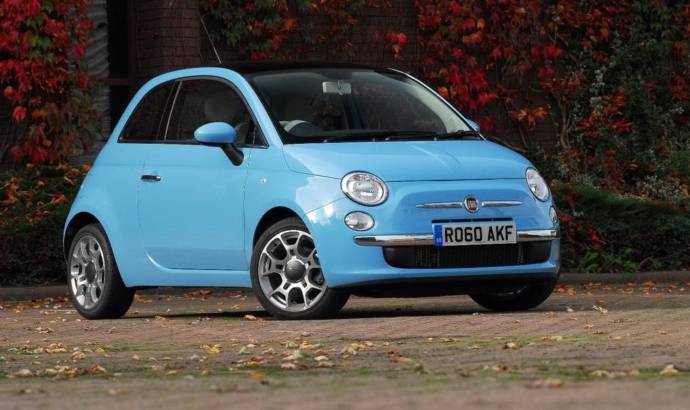
01 Nov 2010
1
Fiat 500 TwinAir price
1 Comment
Comments are closed.

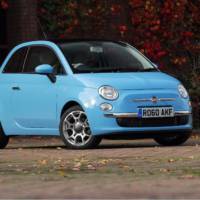
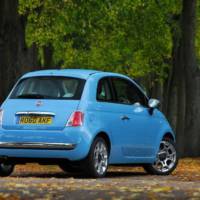
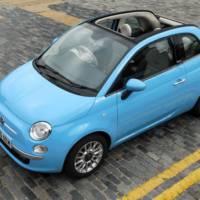
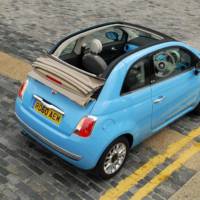
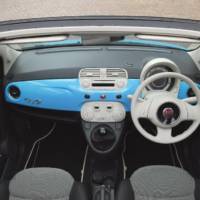
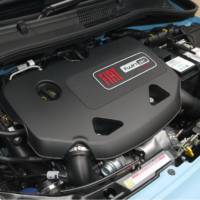

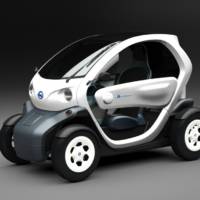
Great to see more green cars hitting the market. The fiat 500 TwinAir definitely deserves it’s awards!